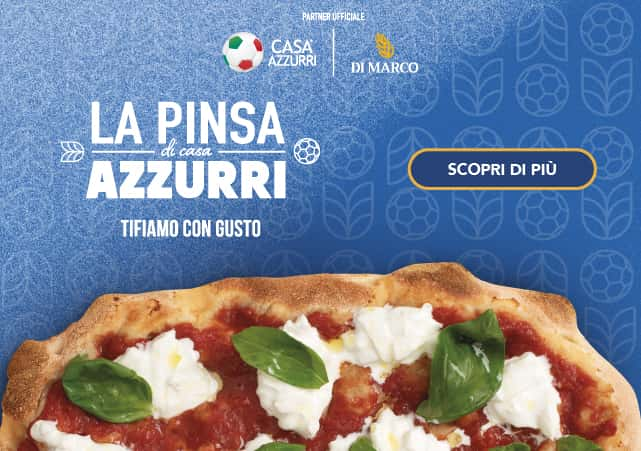Precooked pinsa is ideal in a modern bar, and this is largely due to its extraordinary versatility. But let's go step by step and find out in detail what types of bars exist in Italy, their evolution in recent years and how to satisfy customers with a rich and quality proposal.
Breakfast, lunch or aperitivo at the bar?
Bars are not all the same, and this statement is extremely relevant in the ever-evolving context of our country's eating places. The traditional Italian bar has always been the one we go to in the morning for coffee and breakfast, but in its evolution there have always been a lot of variations. Some bars, in fact, have chosen to focus mainly on lunch, becoming true reference points for workers looking for a quick but tasty meal. These establishments still generate the vast majority of turnover from 12 to 2 p.m. and, to accomplish this, offer a variety of cold and hot dishes. As a result, their average check tends to be higher than bars that focus mainly on breakfast.
In addition, there are bars that have chosen to orient their business toward evening events, such as cocktails and dinner. These establishments generate more than half of their revenue from customers looking for a place to relax and have a chat after a long day at work. Often, these bars have large spaces and large staffs, which translates into more costs but also higher turnover capacity.
In addition to these categories, which we might call traditional, there are some more specialized establishments, including:
- Wine Bars, specializing in the sale and tasting of wines, often paired with gourmet dishes or aperitifs.
- Lounge Bars, known for an elegant and relaxing atmosphere, ideal for informal meetings, socializing and entertainment.
- Sports Bars, focused on broadcasting live sporting events on large screens.
Different time slots lead to diversification
Over the past decade, the sharp division into bar types has gradually disappeared, or at least lightened, except for specialty bars and those geared toward evening occasions, which differ at least in their opening hours.
If we wanted to keep, even with all the relevant assumptions, a strict division, we would note how the food offer must inevitably adapt to different time slots. In Italy, breakfast favours sweets, while lighter or cold dishes are offered at lunch to satisfy breaks during the working day. For evening aperitivo, the proposal focuses on savoury appetizers, with the addition of a few more substantial dishes to close the day in a satisfying way.
What makes precooked pinsa so extraordinary is its versatility, which is lacking in better-known competitors in the Italian food tradition. Pinsa, in fact, can be successfully adopted by all categories of bars. Let's see how, distinguishing by meal and not by type of establishment.
Pinsa for lunch: lightness wins.
Precooked pinsa is an ideal solution to enrich even the lunch menu, catching the attention of customers seeking taste and lightness. Its versatility allows it to be presented in different versions, from whole pinsa to freshly prepared slices with various toppings that satisfy all tastes.
As anticipated, the two key words that make pinsa perfect for lunch are taste and lightness: customers, with still half a day left to work, appreciate the chance to enjoy food that is both delicious and not heavy.
Obviously, you need to indulge them with light recipes that are in line with the low-calorie intake of pinsa: a pinsa caprese might be a good idea, with fresh tomatoes, buffalo mozzarella, basil and a drizzle of extra virgin olive oil. Another solution could be pinsa with grilled vegetables, which is also excellent for those who follow a vegetarian or vegan diet, while for everyone else you could hypothesize classics such as ham and (a little) cheese, prosciutto and arugula, tuna and olives or pesto and cherry tomatoes. Here again, the only limit is imagination.
Precooked pinsa for appetizer and dinner: time to dare
Finally, pinsa is great both as an appetizer and as a main dish for dinner, perhaps while you watch the game of your favourite team. As an appetizer, it is a more refined and healthier alternative to the traditional fried foods that are served to accompany cocktails or glasses of wine.
What makes pinsa even more appealing is how easily and quickly it can be prepared. It only takes 5 minutes in the oven, or even less if you have a professional appliance, to get a perfectly cooked pinsa ready to be flavoured and served. In addition, no kneading and baking skills are required, making the preparation very accessible.
As for dinner, pinsa can be an excellent quality alternative to pizza. In this case, however, we would like to make a suggestion: customers are intrigued by something new, but it is also important that they perceive the difference with the classic margherita or the quattro stagioni that they have been eating all their lives. Because of the dough, the pinsa is different, but a good part of the responsibility falls on the recipe: it is time to dare, to be creative, to experiment and to surprise with something extraordinary that can be prepared in 5 minutes.


